Embark on an extraordinary journey through the cultural tapestry of Europe, where ancient civilizations, artistic masterpieces, and vibrant traditions intertwine. Cultural tours in Europe offer a unique opportunity to delve into the rich heritage of this captivating continent, fostering a deeper understanding of its people, history, and diverse expressions of creativity.
From the iconic ruins of the Roman Empire to the architectural wonders of the Renaissance, from the vibrant music of Vienna to the culinary delights of France, Europe is a treasure trove of cultural experiences waiting to be discovered.
European Cultural Heritage
Europe is a continent with a rich and diverse cultural heritage, spanning from ancient civilizations to modern artistic movements. This heritage is reflected in the many iconic historical sites, monuments, and cultural landmarks found across Europe.
The cultural influences that have shaped European identity and traditions are numerous and varied. These include the legacy of the Roman Empire, the influence of Christianity, the Renaissance, the Enlightenment, and the Industrial Revolution.
Ancient Civilizations
- Greece: The birthplace of democracy, philosophy, and the Olympic Games. Home to iconic sites such as the Acropolis in Athens and the Parthenon.
- Rome: The center of the Roman Empire, known for its aqueducts, amphitheaters, and the Colosseum.
- Egypt: Home to the pyramids of Giza, the Sphinx, and the Valley of the Kings.
Medieval Europe
- Gothic architecture: A style of architecture characterized by pointed arches, ribbed vaults, and stained glass windows. Examples include the Notre Dame Cathedral in Paris and the Westminster Abbey in London.
- Castles: Fortified structures built by the nobility to protect their lands and people. Examples include the Château de Chambord in France and the Tower of London in England.
- Universities: The first universities in Europe were founded during the Middle Ages. These institutions played a major role in the development of European scholarship and culture.
Renaissance and Enlightenment
- Humanism: A philosophical movement that emphasized the importance of human reason and experience. Led to a revival of interest in classical Greek and Roman culture.
- Art and architecture: The Renaissance saw a flowering of art and architecture, with masters such as Leonardo da Vinci, Michelangelo, and Raphael. Examples include the Sistine Chapel in Rome and the Uffizi Gallery in Florence.
- Scientific Revolution: The Enlightenment was a period of intellectual and scientific progress. Scientists such as Copernicus, Galileo, and Newton made major discoveries that changed our understanding of the world.
Modern Europe
- Industrial Revolution: The Industrial Revolution transformed Europe from an agrarian society to an industrial one. Led to the development of new technologies and the growth of cities.
- Romanticism: A literary and artistic movement that emphasized emotion, imagination, and the individual. Led to the rise of nationalism and the development of new forms of art and literature.
- Modernism: A movement in art, architecture, and literature that rejected traditional forms and embraced experimentation. Examples include the works of Pablo Picasso, Le Corbusier, and James Joyce.
Cultural Itineraries

Europe’s rich cultural heritage offers a diverse range of experiences, from historical landmarks to vibrant arts scenes. To cater to different interests and preferences, we have carefully designed a selection of cultural itineraries that highlight the unique treasures of Europe.
Our itineraries are organized around specific themes, such as art, history, music, and cuisine, ensuring an immersive and enriching experience for each traveler. Whether you are an art enthusiast, a history buff, a music lover, or a culinary adventurer, we have an itinerary that will ignite your passion.
Art and Architecture
Embark on a journey through Europe’s artistic masterpieces, from the Renaissance masterpieces of Florence to the contemporary art galleries of London. Visit iconic landmarks like the Louvre in Paris, the Uffizi Gallery in Florence, and the Prado Museum in Madrid, where you will encounter works by legendary artists such as Leonardo da Vinci, Michelangelo, and Pablo Picasso.
For those seeking an enriching experience, cultural tours in Europe offer an unparalleled opportunity to delve into the rich tapestry of history, art, and traditions that define this vibrant continent. While exploring these captivating destinations, consider indulging in the ultimate luxury travel experiences.
From opulent palaces to Michelin-starred restaurants, the top luxury travel destinations offer an unforgettable blend of sophistication and cultural immersion. Return to Europe’s cultural tours with a renewed appreciation for the exquisite artistry and enduring legacy that continues to inspire.
Explore the architectural wonders of Europe, from the Gothic cathedrals of France to the modernist buildings of Barcelona. Admire the grandeur of St. Peter’s Basilica in Rome, the intricate details of Sagrada Familia in Barcelona, and the stunning glass facades of the Pompidou Center in Paris.
History and Heritage
Step back in time as you explore Europe’s rich historical tapestry. Visit ancient ruins like the Colosseum in Rome and the Acropolis in Athens, where you will learn about the rise and fall of civilizations. Trace the footsteps of history at iconic landmarks like the Palace of Versailles in France, Buckingham Palace in London, and the Brandenburg Gate in Berlin.
Discover the cultural heritage of Europe through its museums and historical sites. Visit the British Museum in London to explore the treasures of ancient civilizations, the Hermitage Museum in St. Petersburg to admire Russian art and artifacts, and the Anne Frank House in Amsterdam to learn about the horrors of the Holocaust.
Cultural Immersion
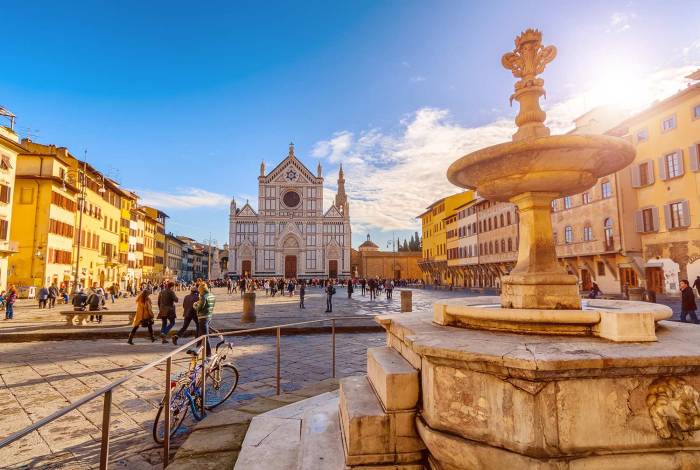
Cultural immersion is a powerful way to experience a destination. By engaging with local communities, participating in cultural events, and learning about different customs, you can gain a deeper understanding of the culture and its people.
One of the best ways to immerse yourself in a culture is to stay with a local family. This will give you the opportunity to experience everyday life and learn about the local culture from the inside. You can also participate in cultural events, such as festivals, markets, and religious ceremonies. These events are a great way to see how the local people live and celebrate their culture.
It is important to be respectful of cultural differences when you are traveling. This means being aware of local customs and traditions and behaving in a way that is appropriate. You should also be mindful of your impact on the environment and the local community. By practicing responsible tourism, you can help to preserve the culture and its traditions for future generations.
Engaging with Local Communities
One of the best ways to immerse yourself in a culture is to engage with local communities. This can be done by visiting local markets, attending community events, and interacting with local people.
* Visit local markets. Local markets are a great place to meet local people and learn about their culture. You can find a variety of goods at local markets, including food, clothing, and handicrafts.
* Attend community events. Community events are a great way to see how local people live and celebrate their culture. You can find a variety of community events, including festivals, markets, and religious ceremonies.
* Interact with local people. One of the best ways to learn about a culture is to interact with local people. You can do this by striking up conversations with people you meet, asking questions about their culture, and learning about their way of life.
Participating in Cultural Events, Cultural tours in Europe
Another great way to immerse yourself in a culture is to participate in cultural events. This can be done by attending festivals, markets, and religious ceremonies.
* Attend festivals. Festivals are a great way to experience the culture of a destination. Festivals often feature music, dance, food, and other cultural activities.
* Visit markets. Markets are a great place to find local crafts, food, and other goods. You can also interact with local people and learn about their culture.
* Attend religious ceremonies. Religious ceremonies are a great way to learn about the spiritual beliefs of a culture. You can attend religious ceremonies at temples, churches, and other religious sites.
Learning About Different Customs
It is important to be aware of local customs and traditions when you are traveling. This will help you to avoid misunderstandings and behave in a way that is appropriate.
* Research local customs before you travel. Before you travel, it is a good idea to research local customs and traditions. This will help you to avoid misunderstandings and behave in a way that is appropriate.
* Be respectful of local customs. When you are traveling, it is important to be respectful of local customs. This means behaving in a way that is appropriate and not causing offense.
* Ask questions if you are unsure. If you are unsure about a local custom, it is best to ask a local person for clarification. This will help you to avoid misunderstandings and behave in a way that is appropriate.
Practicing Responsible Tourism
It is important to practice responsible tourism when you are traveling. This means being mindful of your impact on the environment and the local community.
* Be mindful of your impact on the environment. When you are traveling, it is important to be mindful of your impact on the environment. This means reducing your waste, conserving water and energy, and avoiding pollution.
* Support local businesses. When you are traveling, it is a good idea to support local businesses. This will help to keep money in the local community and support the local economy.
* Be respectful of local people. When you are traveling, it is important to be respectful of local people. This means behaving in a way that is appropriate and not causing offense.
By practicing responsible tourism, you can help to preserve the culture and its traditions for future generations.
Cultural Exchange

Cultural exchange programs in Europe provide opportunities for individuals to immerse themselves in different cultures, fostering intercultural understanding and appreciation.
Here is a comparison of some notable cultural exchange programs in Europe:
Eligibility Criteria
| Program | Eligibility Criteria |
|---|---|
| Erasmus+ | Students enrolled in higher education institutions in participating countries |
| Goethe-Institut | German language learners worldwide |
| British Council | Individuals with a strong interest in British culture |
| French Alliance | Individuals with a desire to learn French language and culture |
Program Duration
| Program | Duration |
|---|---|
| Erasmus+ | 3 months to 12 months |
| Goethe-Institut | 2 weeks to 1 year |
| British Council | 1 week to several months |
| French Alliance | 1 month to 1 year |
Opportunities for Cultural Learning
| Program | Opportunities for Cultural Learning |
|---|---|
| Erasmus+ | University courses, language classes, cultural events, and excursions |
| Goethe-Institut | German language courses, cultural workshops, and excursions |
| British Council | English language courses, cultural workshops, and excursions |
| French Alliance | French language courses, cultural workshops, and excursions |
Examples of Successful Cultural Exchange Initiatives
- The Erasmus+ program has facilitated over 10 million student exchanges since its inception, fostering intercultural understanding and career opportunities.
- The Goethe-Institut has established over 150 language learning centers worldwide, promoting German language and culture.
- The British Council has organized cultural events and educational programs in over 100 countries, showcasing British culture and values.
Cultural Festivals and Events
Cultural festivals and events are a vibrant part of European life, offering a unique opportunity to experience the rich cultural traditions of the continent. These events celebrate everything from music and dance to art, history, and cuisine, providing a glimpse into the diverse heritage of Europe.
Upcoming Cultural Festivals and Events
Here is a calendar of some of the most anticipated cultural festivals and events happening in Europe in the coming months:
- Edinburgh Fringe Festival (August): The world’s largest arts festival, featuring thousands of performances in theater, comedy, dance, and music.
- Oktoberfest (September): A massive beer festival held in Munich, Germany, celebrating Bavarian culture with traditional music, food, and costumes.
- Venice Biennale (April-November): A prestigious international art exhibition held every two years, showcasing the latest trends in contemporary art.
- Glastonbury Festival (June): A legendary music festival held in England, featuring a diverse lineup of artists and a vibrant atmosphere.
- La Tomatina (August): A unique festival held in Spain, where participants engage in a massive tomato fight.
These festivals and events play a crucial role in preserving and celebrating European cultural traditions. They provide a platform for artists, performers, and cultural organizations to showcase their work and connect with audiences. By attending these events, visitors can gain a deeper understanding of the history, heritage, and creativity of Europe.
Cultural Cuisine
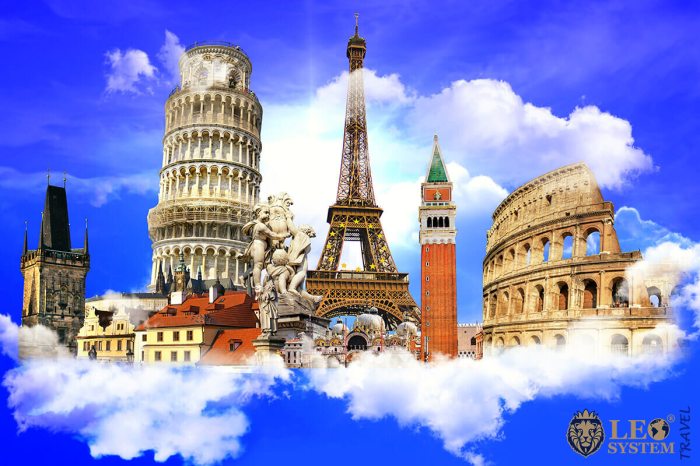
Food is an integral part of European cultural identity, reflecting the diverse histories, traditions, and landscapes of the continent. From hearty stews in the north to aromatic Mediterranean dishes in the south, European cuisine is a tapestry of flavors and textures.
Culinary Map of Europe
A culinary map of Europe would reveal a patchwork of regional specialties, each with its own unique character. In the British Isles, fish and chips reign supreme, while in France, classic dishes like escargots and coq au vin are culinary icons. Italy is renowned for its pasta and pizza, while Spain is famous for its tapas and paella. Eastern Europe offers a rich blend of Slavic, Hungarian, and Balkan flavors, with dishes like borscht, goulash, and ćevapčići.
Influence of Geography, History, and Local Ingredients
The diversity of European cuisine can be attributed to a combination of factors, including geography, history, and the availability of local ingredients. The Mediterranean climate of southern Europe favors the cultivation of olives, grapes, and citrus fruits, which form the basis of many dishes. In the mountainous regions of Central Europe, dairy farming is prevalent, leading to the development of hearty cheese and butter-based dishes. The Atlantic coastline provides an abundance of seafood, which features prominently in the cuisines of Portugal, Spain, and France.
Historical events have also shaped European cuisine. The Roman Empire introduced olive oil, wine, and wheat to many parts of Europe, while the Crusades brought spices and exotic ingredients from the East. The influence of neighboring cultures, such as the Ottomans in Eastern Europe and the Moors in Spain, is also evident in many traditional dishes.
Explore the captivating cultural tapestry of Europe through immersive tours that showcase its rich history, art, and architecture. Whether you’re drawn to the enigmatic ruins of ancient Greece or the vibrant streets of modern-day Paris, these tours offer a unique glimpse into Europe’s cultural heritage.
For those seeking adventure beneath the surface, consider exploring the diverse scuba diving locations that Europe has to offer. Discover the vibrant marine life and underwater wonders that await, before returning to the cultural treasures that make Europe a captivating destination.
Local ingredients play a crucial role in defining the flavors of European cuisine. From the delicate herbs of Provence to the pungent cheeses of the Alps, each region has its own unique culinary treasures. The use of seasonal produce ensures that dishes are always fresh and flavorful.
Cultural Arts and Performance
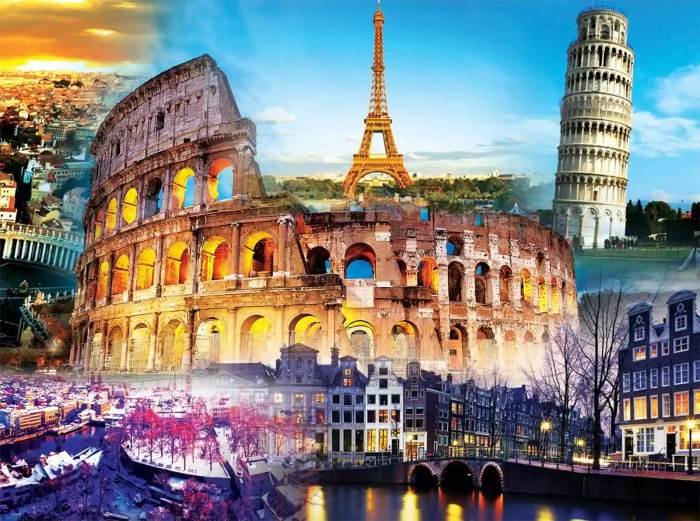
Europe is a hub of cultural arts and performances, boasting a rich tapestry of traditional and contemporary art forms that reflect the continent’s diverse history and cultural heritage. From the grandeur of classical paintings to the vibrant energy of modern dance, European arts and performances offer a captivating glimpse into the region’s artistic soul.
Throughout history, European arts have been influenced by various cultural and social movements, resulting in a diverse range of artistic expressions. These art forms often carry deep cultural significance, embodying the beliefs, values, and aspirations of the societies that created them.
While cultural tours in Europe offer an immersive experience into the continent’s rich history and heritage, nature enthusiasts may prefer to explore the diverse landscapes of the United States. From the rugged peaks of the Rockies to the lush forests of the Pacific Northwest, there are countless best hiking trails in the US that cater to every level of hiker.
After conquering some of these challenging trails, you can return to Europe for a leisurely cultural tour to appreciate the region’s architectural wonders and artistic masterpieces.
Traditional Arts
- Classical Paintings: Masterpieces from the Renaissance, Baroque, and Impressionist eras adorn the walls of museums and galleries across Europe. These paintings depict religious scenes, historical events, and everyday life, offering a glimpse into the artistic and cultural values of past centuries.
- Sculptures: From ancient Greek statues to medieval gargoyles and contemporary abstract forms, sculptures have played a vital role in European art. They often serve as symbols of power, religious devotion, or artistic innovation.
- Folk Music and Dance: Traditional music and dance forms vary widely across Europe, reflecting the diverse cultural heritage of the continent. From the lively Celtic jigs of Ireland to the soulful flamenco of Spain, these art forms provide a window into the cultural traditions of different regions.
Contemporary Arts
- Modern Art: The 20th century witnessed a revolution in European art, with the emergence of modern art movements such as Cubism, Expressionism, and Surrealism. These movements challenged traditional artistic conventions, pushing the boundaries of creativity and self-expression.
- Contemporary Dance: Contemporary dance forms blend traditional and modern techniques, often exploring themes of identity, social issues, and the human condition. They showcase the athleticism, grace, and expressive power of the human body.
- Experimental Theater: European theater has a long history of innovation and experimentation. Contemporary theater companies push the boundaries of traditional storytelling, exploring new forms of narrative, staging, and audience engagement.
Cultural Heritage Preservation
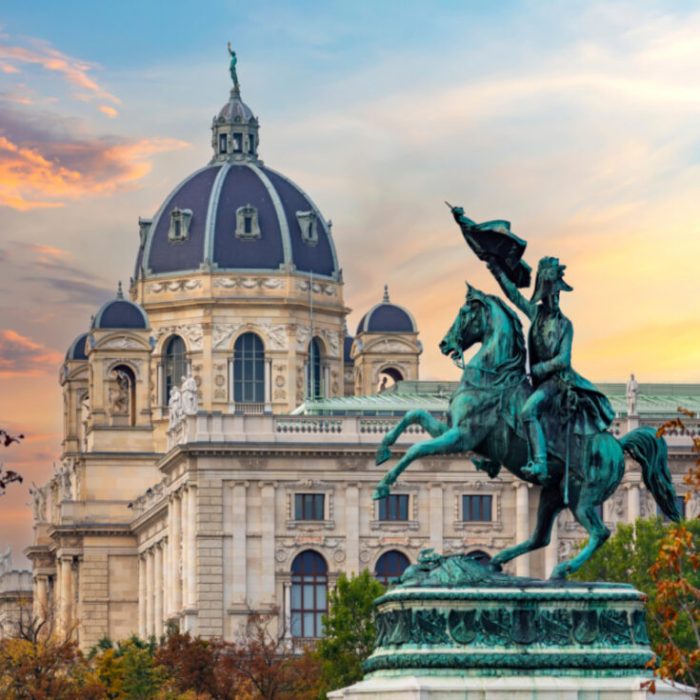
Preserving Europe’s cultural heritage presents both challenges and opportunities. Balancing development with conservation is crucial to protect and safeguard our shared cultural assets for future generations.
Challenges in Cultural Heritage Preservation
- Urbanization and Development: Rapid urbanization and infrastructure development can threaten historical sites and landscapes.
- Climate Change: Extreme weather events, rising sea levels, and pollution pose risks to cultural heritage.
- Tourism: Mass tourism can lead to wear and tear on cultural sites and disrupt local communities.
- Lack of Resources: Limited funding and expertise can hinder conservation efforts.
- Public Awareness: Raising awareness about the importance of cultural heritage preservation is essential for public support.
Opportunities for Cultural Heritage Preservation
- Innovative Technologies: 3D scanning, drones, and virtual reality can enhance documentation, preservation, and accessibility.
- Sustainable Tourism: Promoting responsible tourism practices can protect cultural sites while generating revenue for conservation.
- International Cooperation: Collaborative efforts between countries and organizations can share expertise and resources.
- Education and Awareness: Educating the public about the value of cultural heritage fosters appreciation and support for preservation.
- Community Engagement: Involving local communities in preservation projects ensures their cultural heritage remains relevant and valued.
Successful Conservation Projects
- The Acropolis Restoration Project, Greece: A long-term effort to restore and preserve the ancient Athenian citadel.
- The Venice Lagoon Restoration Project, Italy: A multi-faceted project to protect Venice from flooding and environmental degradation.
- The Colosseum Restoration Project, Italy: A comprehensive renovation to stabilize and preserve the iconic Roman amphitheater.
- The Notre-Dame Cathedral Restoration Project, France: A global effort to rebuild and restore the iconic Parisian cathedral after a devastating fire.
- The Petra Conservation Project, Jordan: An ongoing effort to protect and preserve the ancient city carved into rock.
Importance of Cultural Heritage Preservation
Protecting cultural heritage is essential for several reasons:
- Historical and Cultural Identity: Cultural heritage connects us to our past and shapes our sense of identity.
- Economic Benefits: Cultural tourism and heritage-related industries generate revenue and create jobs.
- Social Cohesion: Cultural heritage fosters a sense of community and shared values.
- Educational Value: Cultural heritage provides insights into history, art, and architecture, enriching our understanding of the world.
- Legacy for Future Generations: Preserving cultural heritage ensures it remains accessible and appreciated by future generations.
Summary
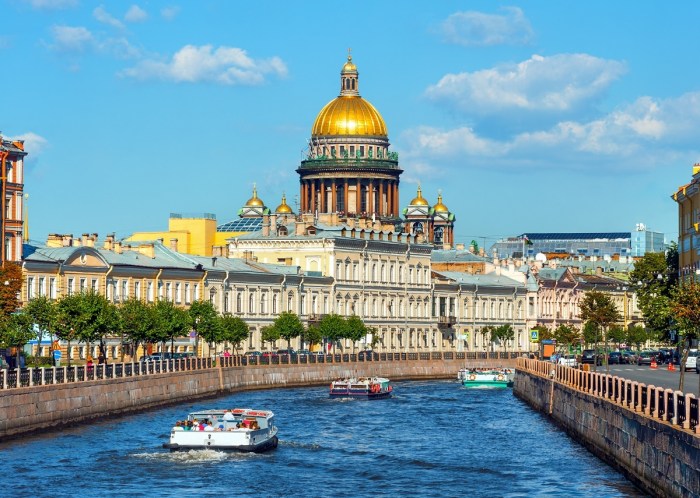
Cultural tours in Europe are not merely about visiting historical landmarks but about immersing oneself in the living traditions that continue to shape the continent’s identity. Through engaging with local communities, participating in cultural events, and sampling regional cuisine, travelers gain a profound appreciation for the richness and diversity of European culture.
As stewards of this shared heritage, responsible tourism practices are essential to ensure the preservation of cultural assets for generations to come. By embracing cultural sensitivity and respecting local customs, travelers can contribute to the sustainability and vitality of Europe’s cultural landscape.
Detailed FAQs: Cultural Tours In Europe
What are the benefits of cultural tours in Europe?
Cultural tours in Europe offer a multitude of benefits, including:
– Enriching experiences through immersion in different cultures
– A deeper understanding of European history, art, and traditions
– Opportunities for personal growth and cultural exchange
– Lasting memories and a newfound appreciation for the diversity of Europe
How can I find the right cultural tour for me?
There are many factors to consider when choosing a cultural tour, such as:
– Your interests and preferences
– The length of time you have available
– Your budget
– The time of year you want to travel
– The level of physical activity you are comfortable with
Once you have considered these factors, you can start researching different tour operators and itineraries.
What are some tips for getting the most out of a cultural tour?
Here are a few tips for getting the most out of your cultural tour:
– Be open to new experiences and embrace the opportunity to learn about different cultures.
– Ask questions and engage with local people.
– Respect local customs and traditions.
– Be mindful of your impact on the environment and support sustainable tourism practices.